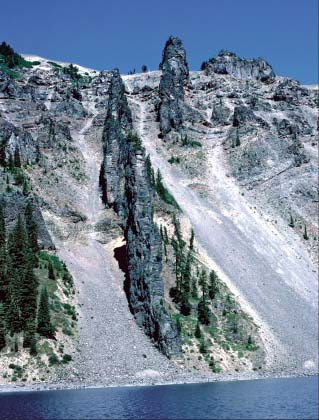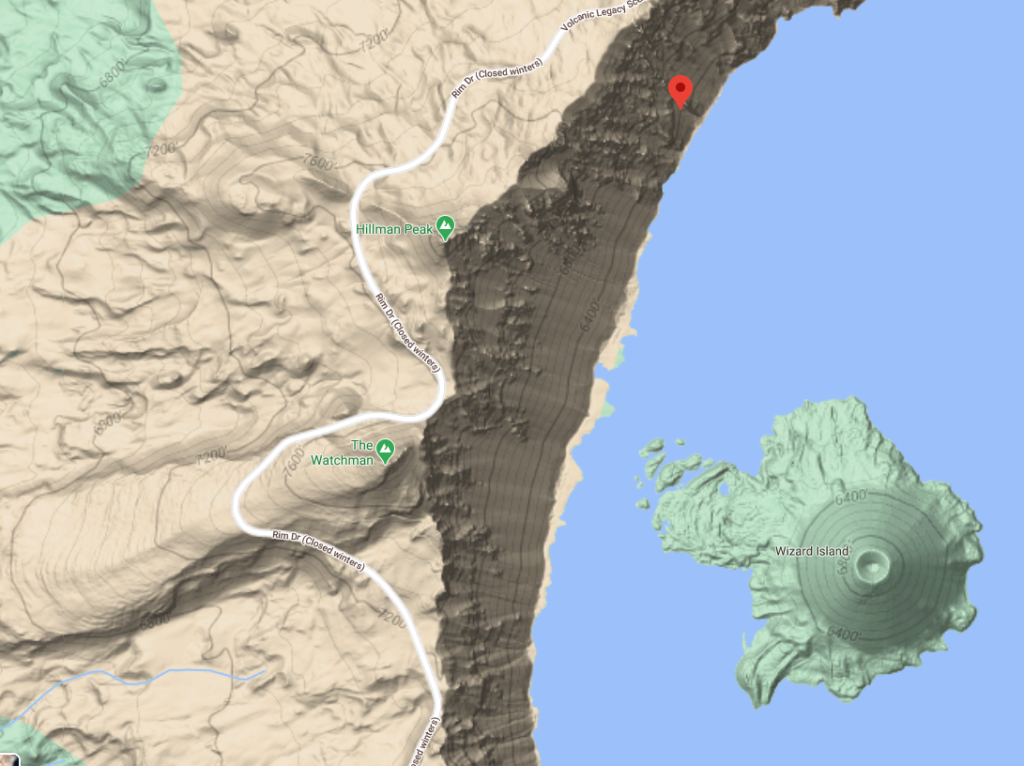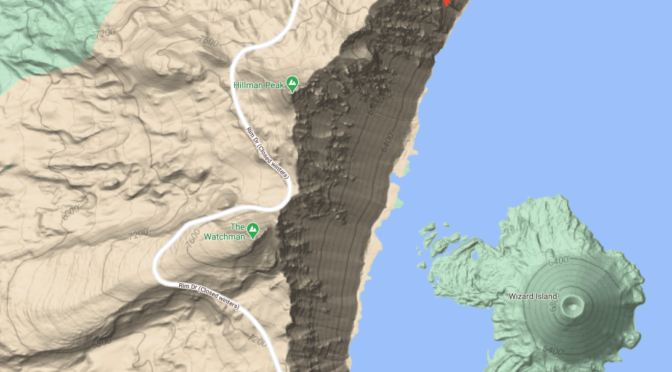Devil’s Backbone – Prominent Geological Features of Crater Lake National Park

The Devils Backbone is a vertical wall of dark andesite lining the cliff face and measuring about 1,000 feet long by 50 feet across near the top. A dike formed by molten lava that created and filled cracks, as it forced its way up through the rock and then solidified. It has been left standing by the erosion of the surrounding material.Of all the dikes on the walls of Crater Lake, only one, the Devil’s Backbone, reaches from the water’s edge to the rim. If this once served as the feeder to a surface flow, the lava has been removed by erosion. Close to the lake the dike is 23 feet wide, but upward it increases in width to approximately 50 feet. Slightly more than halfway up the caldera wall, the dike is offset (plate 29). Like the dacite intrusions just mentioned, the Devil’s Backbone has thin glassy selvages enclosing a paler, holocrystalline, and somewhat vesicular core rich in cristobalite. [The Main Andesite Cone of Mount Mazama: Andesite Dikes, The Geology of Crater Lake National Park, Oregon (1942) by Howell Williams]

Other pages in this section
*** previous title *** --- *** next title ***


